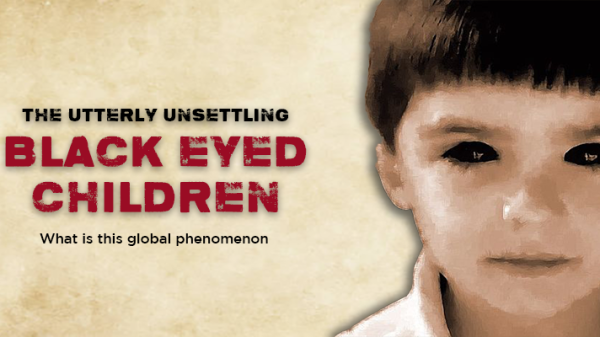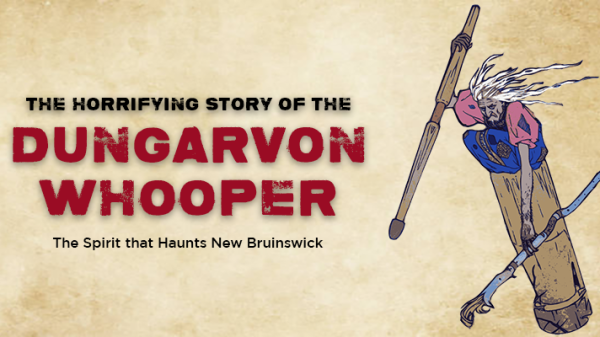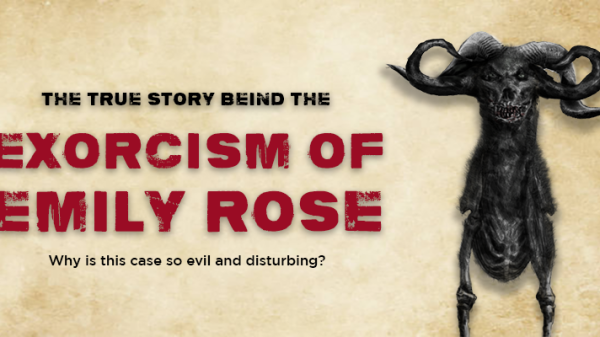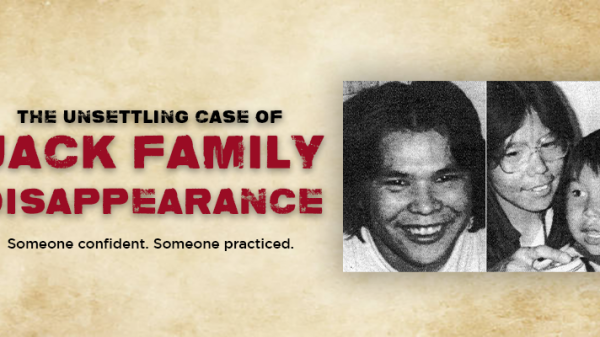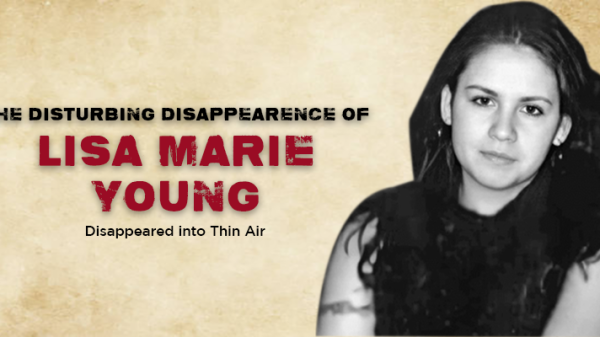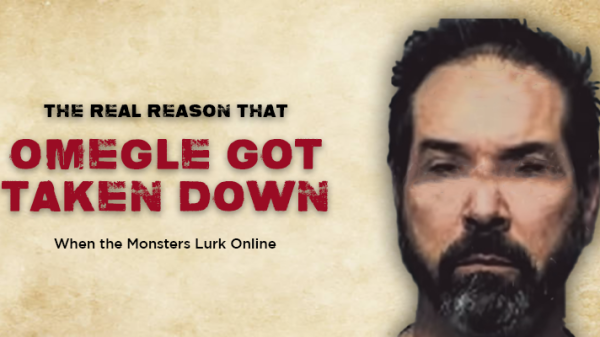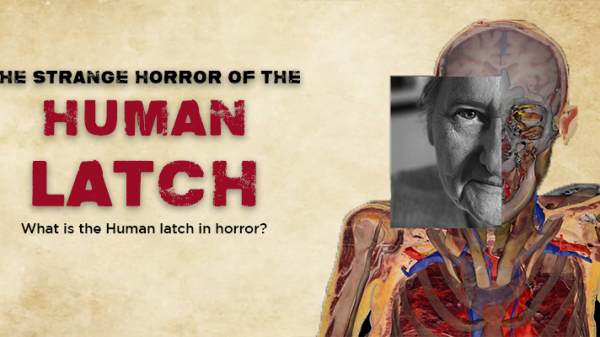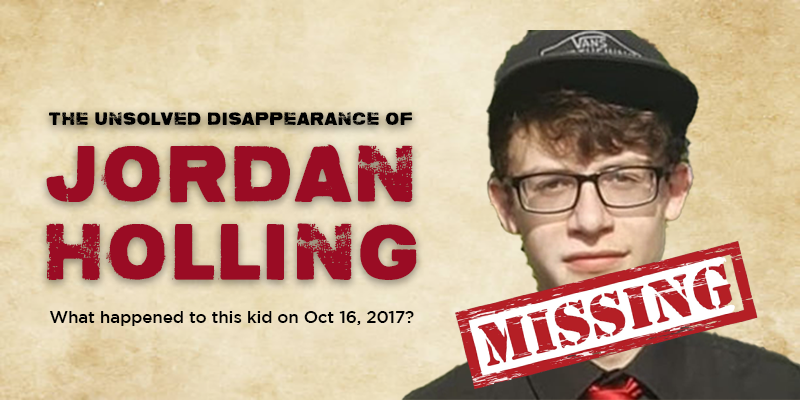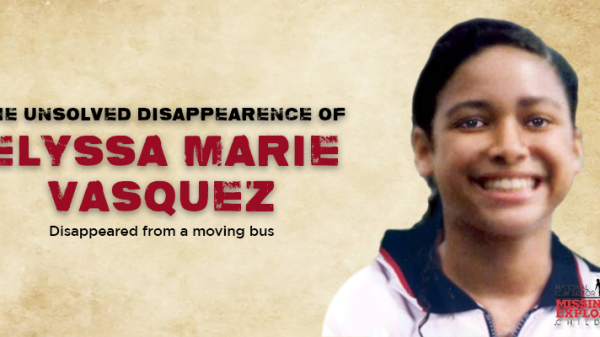In the early morning hours of Monday, October 16, 2017, a cold rain fell over Campbell River, British Columbia. At around 12:01 a.m., the temperature hovered near eight degrees Celsius, and the town was covered in fog.
Between 1 and 2 a.m., surveillance footage from a nearby business recorded 17-year-old Jordan Holling walking down a deserted industrial road. He was dressed in a grey long-sleeved sweatshirt, black pants, and black and red shoes with white soles.
Jordan had shaggy brown hair and wore black glasses. The footage also showed a vehicle driving slowly past him. The car turned around a short distance ahead and came back toward him before disappearing out of view. A different camera later caught Jordan still walking north, this time along the southbound lane. As he moved out of the camera’s range, he disappeared into the cold, foggy night.
Jordan Holling was never seen again.
This is the disappearance of Jordan Holling, a 17-year-old who went missing in Campbell River, British Columbia.
Where is Campbell River, where Jordan Holling lived?
The town in question is Campbell River, British Columbia, often known as the “Salmon Capital of the World.” It has long been a popular destination for tourists and sport fishers.
Campbell River sits on the eastern coast of Vancouver Island, right along the fiftieth parallel, and takes its name from the river that flows through it. Vancouver Island itself is massive—larger than Belgium and roughly twice the size of Connecticut. Despite its size, it’s home to only about 900,000 people, spread across small towns and two major cities, Victoria and Nanaimo. The island stretches along Canada’s Pacific coastline and is covered with mountains and dense forests.
Campbell River is the island’s third-largest city, with a population of around 37,000. The area is known for its natural beauty—on any given day, it’s possible to spot whales or bald eagles from a park bench along the seawall. In many ways, the city has managed to avoid the heavy urban development seen elsewhere, retaining a quieter, more grounded lifestyle.
Most towns on Vancouver Island still carry that relaxed West Coast, environmentally conscious attitude. In the 1970s, many Vietnam War draft dodgers and counterculture groups settled on the island and nearby Gulf Islands, shaping much of that laid-back identity.
Campbell River, though, leans more toward its working-class roots. It originated from the logging and natural resource industries. After the mill shut down about a decade ago, many workers began commuting to the oil fields in Alberta for rotational jobs. In recent years, the town has attracted retirees and newcomers from Vancouver seeking a slower, more affordable lifestyle.
A drive through Campbell River paints two very different pictures. On one side, there are quiet streets lined with well-kept houses, ocean views, and driveways packed with RVs and fishing boats. On the other hand, the scenery shifts to worn-out neighborhoods bordered by industrial lots and clusters of big box stores. Campbell is often considered the blue-collar town of the Island, an industrial hub.
Like most towns, Campbell River has its share of problems. Property crime remains a concern, drug use continues to affect the community, and stories of biker gang involvement, especially the infamous Hells Angels, have circulated for years. In 2010, the magazine MoneySense ranked Campbell River as the fifth worst place to live in Canada, citing factors such as crime rates, employment levels, education, and cultural access.
That headline sparked a response from city officials. Over the following decade, Campbell River underwent significant changes. Investments were made in the downtown core, local shops opened, and the seawall was revitalized. Beautification projects slowly reshaped the town’s image, and today, it stands as one of the more inviting communities on Vancouver Island.
This is the backdrop for the story of Jordan Holling.
The Life of Jordan Holling and the Events Leading to His Disappearance
At the time he went missing, Jordan was 17 years old and living in Campbell River, British Columbia. He was the oldest of three children and shared his time between his mother, Andrea, and his father, Morgan. His closest friend was Sayde, who knew him better than anyone else.
Although Jordan’s parents had separated, they continued to live close to one another and maintained a stable, supportive environment for him and his siblings. It was, as usual, a family setup as anyone could hope for.
Jordan’s father, Morgan, often described him as exceptionally bright—and street smart. He was deeply into technology and science, with a particular fascination for computers. Morgan once said that his son was the kind of kid who could have easily gone on to become a programmer. Chemistry and physics came naturally to him, and he seemed to grasp complex ideas with ease.
His friend Sayde remembered how Jordan had memorized the entire periodic table, something most students only half-heartedly glance at in class. In his spare time, he played video games on a custom-built computer—one he had assembled and upgraded himself piece by piece.
The Holling family had relocated from Nanaimo to Campbell River in February 2013. Even though Jordan hadn’t grown up in the area, he quickly built a circle of close friends and became well-liked at Timberline Secondary School. He often spent afternoons at the local skate park with Sayde and another friend named Raven.
Recently, he had started working at the local A&W restaurant, a job Raven helped him get. Jordan enjoyed the work and took pride in earning his own money as he prepared for his final year of high school.
Sayde often spoke warmly about their time together. Like most teenagers, the two explored town whenever they could—skateboarding during the day and watching the stars at night. One of her fondest memories was of them playing Rock Band at her house. They’d shove the couch out of the way to make more space, and Jordan would belt out Bon Jovi songs with the volume turned up so loud that a neighbor once came knocking—not to complain, but to ask for an encore. His favorite tracks were Livin’ on a Prayer and Wanted Dead or Alive.
Jordan’s mother, Andrea, who worked as a nurse, described him as a devoted older brother and a thoughtful friend—the kind of person who would go out of his way to help others.
By all accounts, Jordan was an intelligent, kind, and creative young man with his whole future ahead of him.
The Disturbing Disappearance of Jordan Holling
The night he disappeared began like any other. It was Sunday, October 15, 2017. When asked about that evening, his father, Morgan, recalled it clearly. It was his birthday.
That Sunday night, October 15, 2017, happened to be Morgan Holling’s birthday. He spent the evening with his parents and sister at a small family gathering. Jordan wasn’t there—he had to work a shift at A&W. Morgan later recalled that he’d offered to pick his son up afterward, but Jordan said he’d stay over with friends instead. Morgan agreed, not knowing it would be the last time he’d speak to him.
The coincidence makes the story even harder to bear. Not only did Jordan vanish on his father’s birthday, but Morgan’s workplace is located right across the street from where his son was last seen alive.
Sayde, Jordan’s best friend, later helped fill in the details of that night. Jordan had worked a late shift at A&W alongside his friend and coworker Raven—the same friend who’d helped him get the job in the first place. Raven finished his shift first and went to meet Sayde. The two then walked back to A&W to wait for Jordan to clock out.

The A&W restaurant where Jordan Holling worked on the day of his disappearance. He had an evening shift.
Once his shift ended, the three of them walked together to Raven’s house in the Campbellton area of town. On the way, they stopped at the Husky gas station. Sayde and Jordan waited outside while Raven went into the liquor store across the street. He was old enough to buy alcohol; the other two were not.
Afterward, they headed back to Raven’s place. Between about 11 p.m. and 1 a.m., the trio hung out—playing video games, listening to music, and having a few drinks. The boys smoked a little while Sayde stayed sober because of her epilepsy.
When people hear that teenagers had been drinking or smoking the night before someone vanished, it’s easy to rush to judgment. But those who knew Jordan were quick to point out that this wasn’t unusual behavior. Like many young people, they’d sometimes drink, play games, and hang out late into the night. It was nothing out of control, and certainly nothing that should have led to tragedy.
Around one in the morning, Sayde and Raven decided to call it a night. Jordan planned to crash on the couch while they turned in for the evening. Not long after, Sayde heard him moving around. Moments later, he called out to say he was heading out.
The plan had originally been for Jordan to stay the night, but he had been texting his mother earlier. She was dealing with an issue at home, and Jordan had been worried about her. Sayde and Raven told him not to worry, that it could wait until morning. He agreed at the time—but apparently changed his mind.
Jordan’s father, Morgan, would later say that he’d heard something similar from police. According to him, Jordan was concerned about his mother, who had been having problems with her boyfriend. Morgan believed his son was planning to check on her before going home. Her house wasn’t far from Raven’s place.
Before leaving, Jordan told his friends good night and that he loved them. Sayde said that wasn’t unusual for him, especially when he’d been drinking a bit—he was an affectionate drunk, the kind who got sentimental.
Before heading out into the night, he borrowed Sayde’s sneakers because his own shoes were worn through and full of holes. The borrowed pair was a size too small, but at least they were dry. He wasn’t dressed for the weather—just a sweatshirt, jeans, and those tight shoes—hardly enough for a cold, wet Pacific Northwest night.
The Trail Goes Cold
By morning, Sayde’s messages to Jordan went unanswered, his phone going straight to voicemail. Concerned, she contacted Andrea, his mother, to check whether he’d made it home. Andrea assumed he had stayed with Raven. When Jordan didn’t show up for his morning shift at A&W, panic set in.
Andrea knew immediately that something was wrong. Jordan never missed work. She went to the police station right away to file a missing person report.
The Royal Canadian Mounted Police began their investigation, collecting witness statements and reviewing CCTV footage from nearby businesses. The first recording showed Jordan leaving Raven’s apartment building, skateboard in hand. Another camera captured him walking along the road outside.

The final CCTV footage of Jordan Holling getting out of the apartment in the morning of Oct 16, 2025
He was later seen heading north on Highway 19, still carrying the skateboard. It’s worth noting that this stretch of the highway runs directly through town—it’s not a high-speed route but a slower section divided by shops and a grassy median. One side heads south toward faster traffic, the other north across a bridge leading to a more isolated area of Vancouver Island.
Footage showed Jordan walking north along the southbound lane—essentially walking toward town on the wrong side of the road. Around the intersection of Highway 19 and 16th Avenue, a car passed him, made a U-turn, and came back in his direction before driving out of frame. Later footage showed Jordan again, but this time the skateboard was gone.
His final confirmed sighting was somewhere between 14th and 16th Avenue. Those recordings, timestamped and compiled by police, were shared only with his family.
Over the following days, Campbell River’s residents rallied to search for the missing teenager. Volunteers combed the area despite the miserable weather. October rain on Vancouver Island is relentless, and conditions were cold and punishing. Teams from Campbell River Search and Rescue joined in, alongside the RCMP, scouring city streets, wooded areas, and riverbanks on foot, horseback, and ATVs.
Only one piece of physical evidence was ever recovered: Jordan’s skateboard. It was found lying in the grassy median of Highway 19, near where he was last seen. The location itself is odd—there’s no sidewalk or pedestrian path there, only a triangular patch of grass where the road splits into two directions.
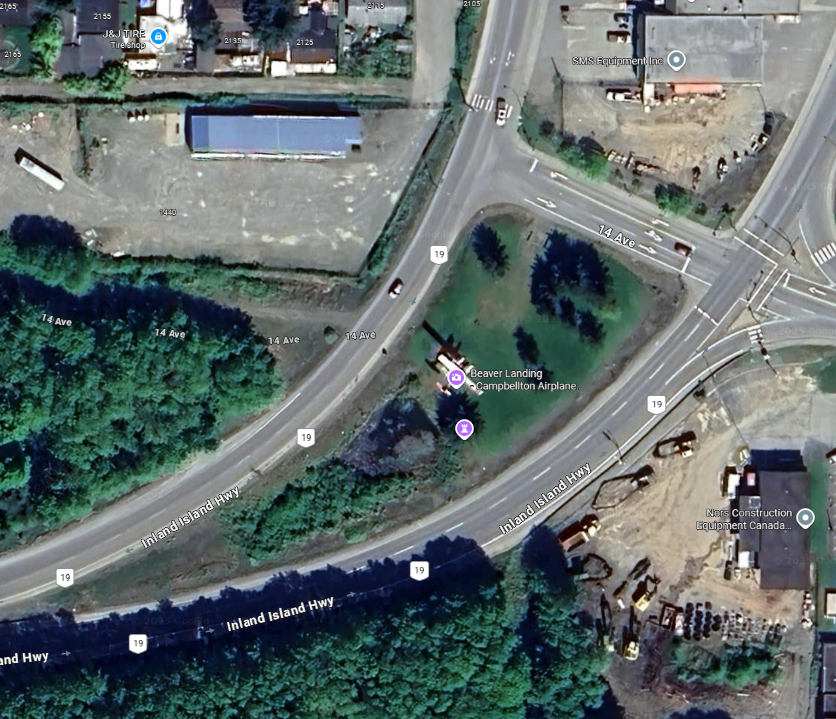
The triangular stretch of land, where Jordan’s skateboard was found
Morgan said it didn’t make sense for Jordan to have left it behind. “He had it in the first camera footage,” he said. “Later, he didn’t. It was strange. He wasn’t running or in a hurry, just walking along the road.”
Sayde also found it puzzling, but mentioned that Jordan had once abandoned his skateboard before—only temporarily. He and Raven had been chased near an area the locals call the “Crack Forest,” a wooded section behind the Walmart where some of the city’s most troubled residents live. They’d gone back later to retrieve it.
For context, “Crack Forest” isn’t an official name—it’s a nickname locals use for that small forested patch known for drug activity and occasional violence. Police interviewed two individuals often seen there, known locally as Rose and Q-Ball. Both were questioned and cleared of any involvement.
It’s important to note that Jordan had no history of hard drug use. The name “Crack Forest” was simply local slang, the kind of crude shorthand teenagers tend to use for rough parts of town.
In the weeks that followed, police examined Jordan’s personal belongings, including his laptop. He had been skilled with computers; so much so that the RCMP couldn’t access the encrypted files.
The RCMP sent both Jordan’s desktop and laptop computers to Vancouver for forensic examination. Despite extensive analysis, nothing useful came from either device.
Investigators also looked into his social media accounts, hoping for any trace of communication that might explain what happened that night. Unfortunately, they hit a wall. Due to Facebook’s privacy policies, access to a missing person’s account is restricted unless specific legal conditions are met, and those vary from country to country. In Canada, this meant the RCMP had to go through international channels and complete formal paperwork, often involving waiting periods that were not clearly defined in Facebook’s terms.
Jordan’s father, Morgan, said he was never told whether investigators were able to gain access to his son’s account. “As far as Facebook goes, I don’t know if they ever got into it,” he said. “I never heard any outcome from that.”
By that point, nearly everything that could be examined had been. The car seen in the CCTV footage was located and ruled out. Jordan’s skateboard had been found in the grassy median of Highway 19. His electronics were analyzed, his online activity checked. Despite multiple large-scale searches, no other physical evidence was ever discovered.
The Theories Regarding Jordan Holling’s Disappearance
With no new developments, speculation naturally followed.
Jordan Holling’s case remains open, and over the years, several theories have circulated about what could have happened during those early hours of October 16, 2017.
One of the most widely discussed possibilities is that Jordan may have been struck by a vehicle. It was late, the night was dark, and visibility was poor due to fog and intermittent rain. Around that time, nearby bars would have been closing, and drivers heading out of town might not have been vigilant. The section of Highway 19 where Jordan was last seen transitions quickly from a 110 km/h speed zone to 50 km/h as it enters Campbell River. His skateboard was later discovered near that same area, lending weight to the idea that he might have been hit.
Under this theory, the driver could have panicked, chosen to conceal the accident, and disposed of the evidence. Locals note that many residents on Vancouver Island are skilled with vehicles and have the means to repair damage privately, rather than relying on commercial shops. Given that collisions with deer are common on the island, bringing in a damaged car and claiming to have hit wildlife wouldn’t draw much suspicion.
Adding to the difficulty, heavy rainfall began shortly after Jordan disappeared, which could have washed away any potential trace evidence, such as tire marks or biological material.
However, this explanation has several weaknesses. There is no CCTV footage showing an accident, no debris, no tire marks, and no visible damage consistent with a hit-and-run. The storm might have removed some clues, but not all of them. There was also no indication of any vehicle slowing or stopping in the recorded footage.
And beyond the physical evidence, there’s the question of conscience. Covering up the death of a teenager would require an extraordinary level of coldness and secrecy—someone capable of living with that knowledge for years without ever speaking a word.
Still, investigators have never been able to rule out the possibility completely. Whether the driver was a local or someone simply passing through Campbell River that night remains unknown.
Some residents of Campbell River believed Jordan might have simply walked into the surrounding wilderness and never made it back out. It’s a theory based on geography more than anything else. The area around the city is dense and rugged, and survival experts often describe it as unforgiving terrain. The television series Alone even filmed several of its early seasons on the northern part of Vancouver Island due to the wet, isolated, and inhospitable landscape. Heavy rainfall, wild animals, and steep ravines make even short hikes difficult.
Under this idea, Jordan could have wandered off the road, become disoriented, and fallen into a ravine or the nearby Campbell River. The problem is that nothing about his route supports that scenario. To reach the woods from where he was last seen, he would have needed to leave the main road and cut through rough ground in the middle of a cold, rainy night.
He wasn’t dressed for it either—just a sweatshirt, jeans, and sneakers that didn’t fit him properly. He had no flashlight, no backpack, and no reason to take that detour. It wasn’t a shortcut to his mother’s home; it would have taken him in the opposite direction.
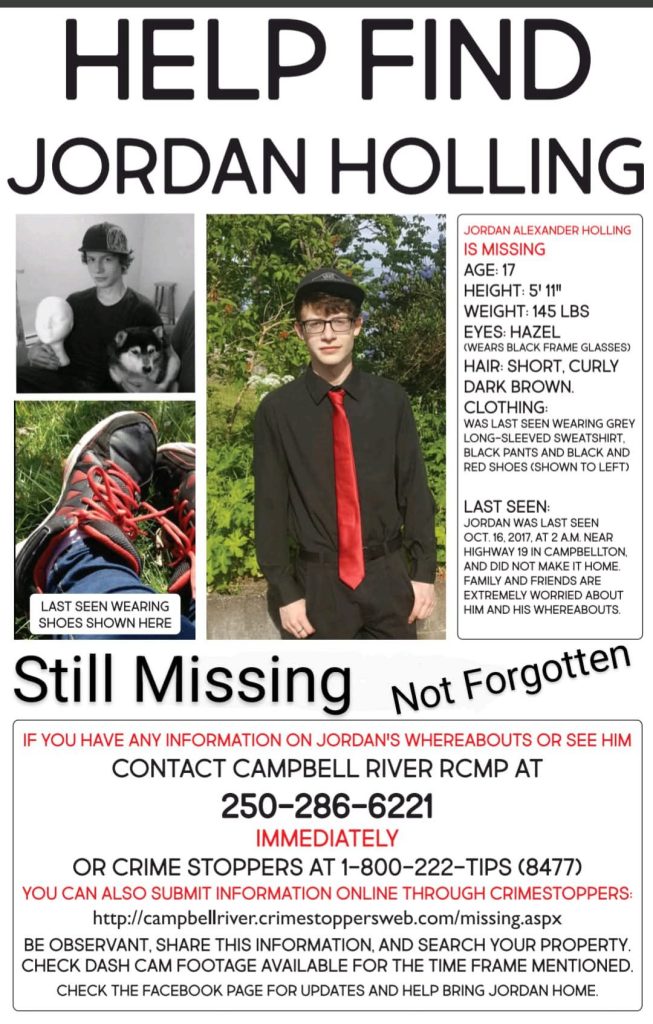
Jordan Holling’s missing poster that was around Campbell River
Those who know the region note that nights in October on Vancouver Island are pitch-black. The cloud cover blocks the moon, the trees swallow the light, and within a few steps, the darkness becomes total. Walking through that kind of forest, drunk and underdressed, would have been nearly impossible.
Morgan Holling acknowledged that there was technically access to the woods nearby, so it’s possible Jordan could have gone in—but beyond that, no one knows.
In the days that followed Jordan’s disappearance, Campbell River was hit by constant rain. Search and rescue teams were deployed immediately, utilizing dogs and volunteers to comb through the surrounding area, but the downpour made the task even more challenging. The rain never seemed to stop, and Morgan later recalled wondering how effective scent dogs could even be under those conditions. Despite every effort, nothing was found.
That’s why the “accidental death” theory doesn’t sit right with many people close to the case. While it’s technically possible that Jordan wandered off into the forest, the idea doesn’t line up with his circumstances. He had left Raven’s place to check on his mother and likely planned to go to bed afterward—not hike into the woods in the middle of a storm.
He had also been drinking, wearing clothes unfit for the weather, and walking in shoes a size too small. The forested areas around Campbell River are complex enough to navigate in daylight, let alone at two in the morning with no flashlight. Those familiar with the island say it would have been completely dark, the kind of darkness where you can’t see your own hands.
That brings us to another theory—the idea that Jordan may have left on his own.
Like most teenagers, Jordan had once talked casually about running away, though it never went beyond words. Still, his final movements leave a sliver of possibility. He was last seen on a road that leads south toward the ferry terminals, which connect Vancouver Island to the mainland. Could he have planned to leave?
His friends and family doubt it. Sayde said that while Jordan had friends outside British Columbia, none were close enough to help him disappear. His father shared the same disbelief. Morgan admitted the idea had crossed his mind, but dismissed it quickly. “If he’d planned to leave, he would have packed a bag,” he said. “There’s no sign of that.”
That bag—or rather, the lack of it—is one of the most baffling details in the case. Jordan was known always to carry a backpack filled with small personal items, medication, and random things he liked to keep on hand. Yet in every frame of CCTV footage, he’s never seen with it. The bag was never recovered.
Morgan remembered that his son had just picked up a new prescription a few days earlier—his first time using a bubble-pack system that divided each day’s pills into small plastic blisters. He was certain Jordan had it with him that night, but the medication and backpack both vanished along with him.
Everything about that night seemed to contradict the idea of a planned escape. He had no jacket, was wearing borrowed shoes, and had no bag or supplies. Running away under those conditions would have been nearly impossible.
To add to that, RCMP reviewed all ferry terminal surveillance from the following day. Jordan never appeared on any of it. Investigators also tried to trace his phone, hoping to pick up pings from cell towers, but it had already gone dead. Sayde later mentioned that Jordan often forgot to charge it, so it may have simply powered off.
Neither Jordan’s phone nor his backpack has ever been recovered. Sayde, his best friend, said that while the two had once joked about running away, they had also agreed they would never actually do it. If either of them ever left home, they promised to stay in touch. Sayde said that time has long since passed, and Jordan never reached out.
At the time of his disappearance, Jordan was focused on completing his education. He wanted to graduate, save money, and eventually move out to start a life of his own. He wasn’t the kind of person to walk away from his family without a word, and certainly not in the middle of the night with no plan, no bag, and no cash.
Running away also doesn’t fit the timeline. The first ferry out of Nanaimo that morning was at 6 a.m., nearly two hours away by car. If Jordan had intended to catch it, he would have needed transportation. Unless someone picked him up, there was no practical way for him to get there.
Even if he did have a ride, there’s another problem—money. He worked part-time at A&W and had just received a paycheck, likely a small one, maybe a few hundred dollars at most. That’s not enough to start over, especially with no luggage or identification. And he had no reason to leave. His family life was stable, and those who knew him described him as grounded and close with both parents.
Another possibility investigators had to consider, though difficult to talk about, was self-harm. The Campbell River bridges were only a short walk north of where he was last seen. Around that time, another person had died by suicide from one of those same bridges. The river below flows into an estuary and then out into Discovery Passage, where strong tidal currents could easily carry anything away.
It’s also worth noting that the hydroelectric dam upriver was undergoing maintenance at the time, releasing large amounts of water and increasing the flow. Jordan wasn’t reported missing until the next morning. By then, nearly five hours had passed, long enough for a body to drift from the river into open water.
But nothing about Jordan suggested he was suicidal. He could be darkly funny, and sometimes leaned into an emo style, but friends and family described him as happy, hopeful, and making plans for the future. He had a steady job, was doing well in school, and was surrounded by people who cared about him. There were no signs of mental distress or self-destructive behavior.
Morgan dismissed the idea altogether. “I don’t think he did anything by choice,” he said. “You think of everything—even the crazy stuff. I’ve even thought about alien abductions.” Sayde shared that Jordan had always been open about his feelings and that the two often talked through their problems together. “We used to sit in the back of the art room at lunch,” she said. “We were the quiet kids in black, but we always looked out for each other.”

Jordan Holling went missing eight years ago. There are no active leads that the public knows right now.
There are no surveillance cameras on the bridge itself, though many businesses in the area have cameras facing the nearby streets. None have ever shown Jordan crossing or heading that way.
Which leads to another theory—the possibility of foul play.
Campbell River isn’t known for frequent violence, but crime does exist. The city has regularly appeared on national lists ranking Canada’s most dangerous towns, though it averages only about one homicide a year. Still, British Columbia has a dark history. During the 1980s, serial killer Clifford Olson used parts of Vancouver Island as a hunting ground. Statistically, the province has recorded an unusually high number of serial offenders compared to the rest of the country.
Even so, there’s nothing to suggest Jordan was involved in anything criminal or risky. He wasn’t the type to pick fights or seek out trouble. Morgan pointed out that for foul play to be a motive, there would need to be a significant reason—something that would make a person want to hide what they’d done. “If it had to do with drugs, it would have to be big,” he said. “You don’t cause that kind of chaos over something small. And Jordan wasn’t part of anything like that.”
Jordan’s worn-out shoes and old clothes reflected a simple lifestyle. “I offered to buy him new ones,” his father remembered, “but he was happy with what he had.”
Jordan never owned much. He wasn’t the kind of teenager chasing expensive clothes or gadgets, and there was nothing in his life to suggest he was caught up in crime. His father, Morgan, made it clear that Jordan’s disappearance wasn’t the result of some dangerous association. “He wasn’t mixed up in anything,” he said. “He didn’t have enemies.”
Still, one unsettling detail emerged. Just two weeks before he vanished, Jordan posted in a local Facebook group called Campbell River Rant, Rave, and Randomness. His post read: “So this is a first. An adult male pulled a knife on me. Like, actually pulled a knife on me.”
No one ever learned the full story behind the incident, but police did follow up on it. Nothing came of the investigation.
Sayde mentioned that she herself had once faced an attempted kidnapping in the same town, adding that Campbell River isn’t without its darker corners. It’s possible, she said, that someone with bad intentions crossed paths with Jordan that night. He had been walking alone, late, in a rougher part of town, after drinking.
Rumors also surfaced online about a truck driver seen at a nearby card-lock gas station around that time. Some speculated about a passing trucker with sinister motives—a theory that tied into long-standing fears about transient serial offenders using highways to target victims. There’s no proof of this, but it remains one of several theories that have circulated since his disappearance.
When asked what he personally believes, Morgan didn’t hesitate. “I think something happened to him,” he said. “Someone probably knows what it was and covered their tracks well. I just hope one day, someone’s conscience gets the better of them and they come forward.”
The RCMP continues to treat the case as an open, active investigation. On the second anniversary of Jordan’s disappearance, Sergeant Dave Johnson confirmed that it remains a priority. “It’s still ongoing,” he said. “Every tip is investigated. People can contact us directly or go through Crime Stoppers if they prefer to stay anonymous.”
Staff Sergeant Troy Beauregard added that investigators remain in contact with Jordan’s family and have consulted with local search and rescue teams about potential next steps.
Morgan confirmed that police still receive information. “They get calls—maybe every week, sometimes every couple of weeks, even from the U.S. People think they’ve seen him. I still get messages now and then. Someone once sent me a blurry photo from Fort McMurray, saying it might be him breaking into cars.” He said he doesn’t mind the messages, hoping that one might eventually lead somewhere. “I’ve watched that CCTV footage enough to have it memorized,” he said. “It’s just him walking.”
Jordan Holling’s Disappearance and Hells Angels
However, during my research into this case, I came across something unusual. The Hells Angels, Canada’s most infamous outlaw motorcycle club, has a known and longstanding presence in Campbell River and across Vancouver Island. Their name surfaced a few times in background searches related to local crime, but the closest thing resembling a lead came from an unexpected place: Reddit.
Two anonymous users, years apart, posted comments about Jordan’s disappearance under a thread titled “Where is Jordan Holling?” on the subreddit r/UnresolvedMysteries. Both accounts were created solely to post those comments, and neither has been active since. I attempted to reach out to both users, but unsurprisingly, I received no reply.
The first comment appeared on Thursday, October 15, 2020—the exact anniversary of Jordan Holling’s disappearance, three years to the day. It was the account’s only post. It read:

The Reddit comment that was made on the third anniversary of Jordan Holling’s disappearance
“Moral of the story: don’t fuck with the Hells Angels.”
Two years later, in February 2024, a different throwaway account left another comment in the same thread. It said:
“video going around of him getting beat to death (sic) by Hells Angels but kids are too scared to bring it to the police in fear of getting hunted down if anyone has this video share it with me and I will bring it in no matter what happens to me(sic)”
There is no verifiable evidence to support either claim, and both remain unsubstantiated rumors circulating online. Still, the timing, tone, and the fact that these posts appeared years apart—each from accounts that vanished immediately afterward—make them difficult to ignore.
Trying To Pick Up the Pieces and Move On
Both Morgan and Andrea have asked that anyone with genuine information go through proper channels rather than contacting the family directly. They’re grateful for the support they’ve received, but also need space to heal.
Andrea has expressed deep appreciation for the community that continues to rally around them. “Every day, I’m thankful,” she said. “People come up to me and tell me they searched for Jordan. Some I don’t even know. They ask how I’m doing.”
For everyone involved, the hope hasn’t faded. Those close to the case still believe that one call, one memory, or one overlooked piece of information could finally lead to answers.
Jordan Holling has now been missing since October 16, 2017. Anyone with information is urged to contact the Campbell River RCMP or leave an anonymous tip through Crime Stoppers.
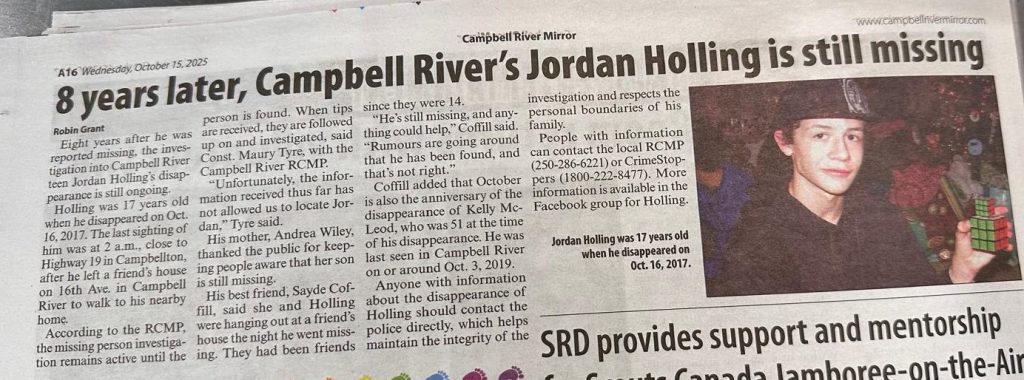
A newspaper clipping form the local newspaper, eight years later.
Sayde made one final plea. “If anyone knows anything, please say something,” she said. “It doesn’t matter how small it seems. Even a detail that feels insignificant could be the clue that finally leads police to him.”
Jordan’s grandmother, Susan, echoed that hope. “Come forward,” she said. “Even the smallest thing can make a difference.”
The Holling family’s pain has not lessened with time. In a local interview, Susan described what life feels like now. “You go to bed thinking about him. You wake up thinking about him,” she said.
His post struck a chord across the community. Many who had searched for Jordan or shared his story reached out again, refusing to let his memory fade.
At the time he disappeared, Jordan was 17 years old, 5 feet 11 inches tall, and about 145 pounds. He had brown hair, wore glasses, and was last seen in a gray long-sleeve shirt, black pants, and black-and-red shoes.
Anyone with information is urged to contact the Campbell River RCMP at (250) 286-6221, or submit an anonymous tip to Crime Stoppers at 1-800-222-8477 or through solvecrime.ca.
The public can also join the Missing Jordan Alexander Holling Facebook group, where updates and community efforts to locate him continue.
Andrea and Morgan remain deeply grateful for the compassion and support they’ve received. “Every day, someone reminds us we’re not alone,” Andrea said. “People come up to me and tell me they helped in the search. Some I don’t even know.”
Eight years later, on the eve of his disappearance as I write this, the case of Jordan Holling remains unsolved. But to those who knew him—and to many who didn’t—his story still matters. His family and friends hold out hope that somewhere out there, someone knows what happened that night, and that one small piece of information could finally bring him home.
This article was made possible by reporting and archival material from the Comox Valley Record, Campbell River Mirror, CBC News British Columbia, CTV Vancouver Island, and the Times Colonist.
Additional timeline and witness information were drawn from True North True Crime, Episode 3: The Disappearance of Jordan Holling (Acast, 2020). I also reviewed public discussions from the Reddit community r/UnresolvedMysteries, particularly threads dedicated to Jordan Holling’s disappearance.
Contextual references regarding Campbell River’s socioeconomic background and crime statistics were sourced from MoneySense’s “Canada’s Worst Places to Live” (2010) and Statistics Canada’s 2021 Census data.
All independent analysis, synthesis, and new findings were conducted by the author.
Next, read about the Disappearance of Jack Family from BC, or if you are looking for Vancouver Island Stories, the disappearance of Lisa Marie Young from Nanaimo.











